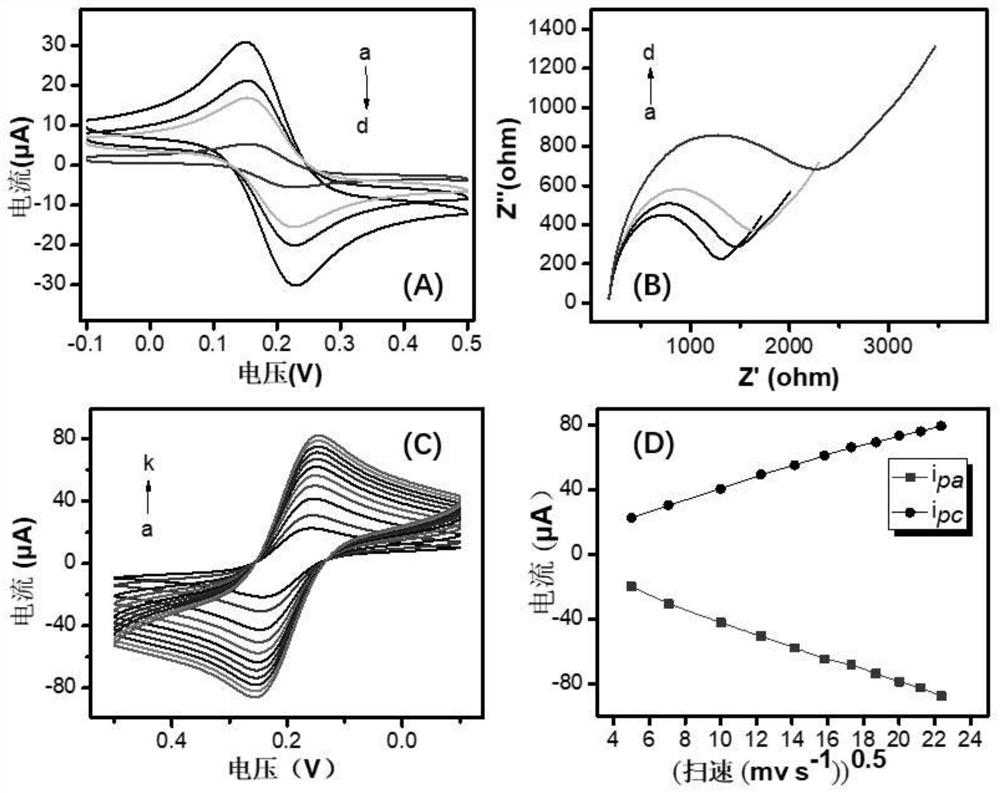DNA biosensor for rapidly detecting clostridium perfringens in meat products and detection method thereof
A clostridium perfringens and biosensor technology, applied in the field of detection, can solve the problems of easy occurrence of false positives, high detection cost, long-term verification, etc., and achieve the effects of low cost, high sensitivity, and improved accuracy
- Summary
- Abstract
- Description
- Claims
- Application Information
AI Technical Summary
Problems solved by technology
Method used
Image
Examples
Embodiment 1
[0044] Example 1: Detection of Clostridium perfringens
[0045] 1.1 Screening of Clostridium perfringens-specific primers
[0046] Methods: Pseudomonas putida (CICC 20677), Klebsiella pneumoniae (CICC 20093) and Escherichia coli (CICC C0031) were extracted from TIANamp Bacteria DNA Kit (Tiangen Biochemical Technology Co., Ltd., Beijing). , Pseudomonas aeruginosa (CICC 21625), Lactobacillus plantarum (CICC 6240), Bacillus subtilis (CICC25064), Salmonella (CICC B0082), Staphylococcus aureus (CICC B0172), Clostridium sp. (ATCC 17787), The genome of Clostridium perfringens (CICC 22949) was amplified by PCR with primers CPA-F (5'-GCTAATGTTACTGCCGTTGA-3') and CPA-R (5'-CCTCTGATACATCGTGTAAG-3') using the extracted genome as a template. The PCR amplification procedure was pre-denaturation at 94 °C for 4 min; denaturation at 94 °C for 40 s, annealing at 52 °C for 1 min, extension at 72 °C for 30 s, 35 cycles; extension at 72 °C for 10 min, PCR products were verified by agarose gel ele...
PUM
| Property | Measurement | Unit |
|---|---|---|
| concentration | aaaaa | aaaaa |
Abstract
Description
Claims
Application Information
 Login to View More
Login to View More - R&D
- Intellectual Property
- Life Sciences
- Materials
- Tech Scout
- Unparalleled Data Quality
- Higher Quality Content
- 60% Fewer Hallucinations
Browse by: Latest US Patents, China's latest patents, Technical Efficacy Thesaurus, Application Domain, Technology Topic, Popular Technical Reports.
© 2025 PatSnap. All rights reserved.Legal|Privacy policy|Modern Slavery Act Transparency Statement|Sitemap|About US| Contact US: help@patsnap.com



